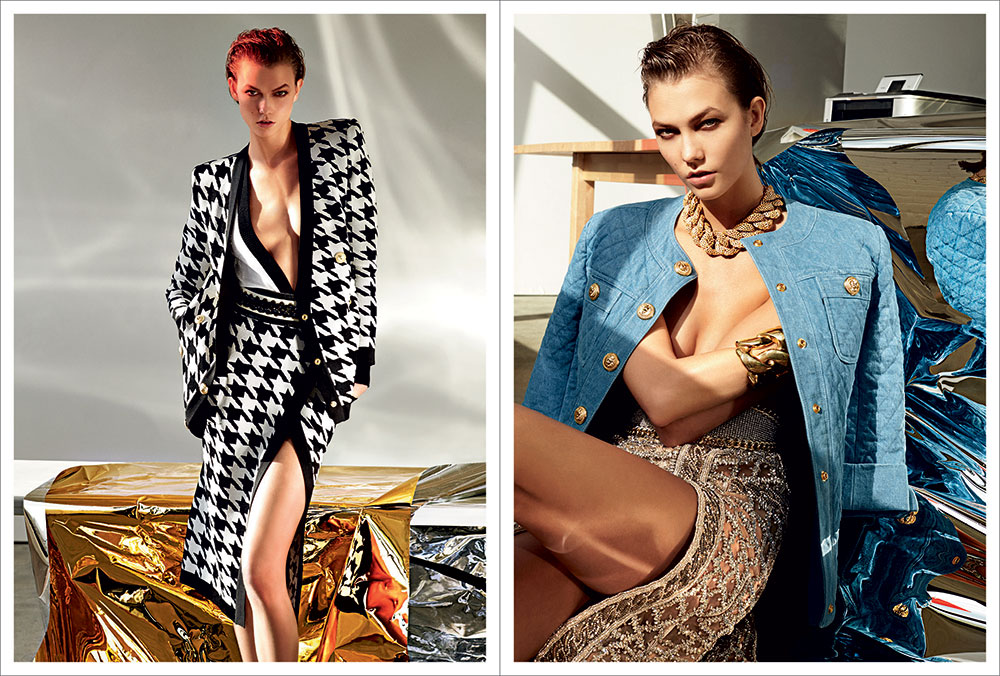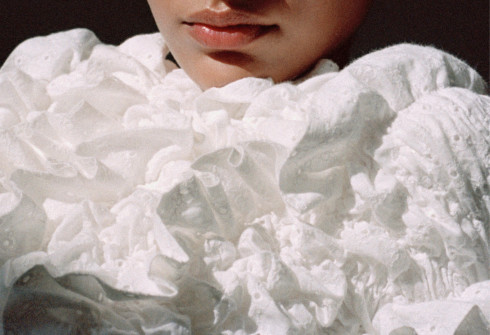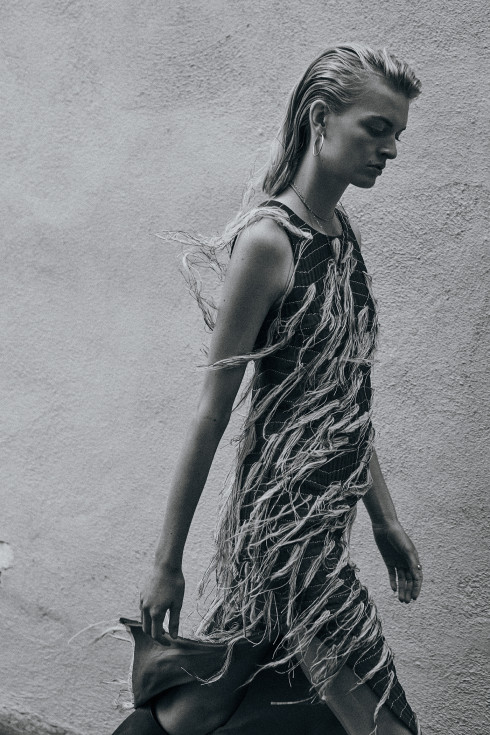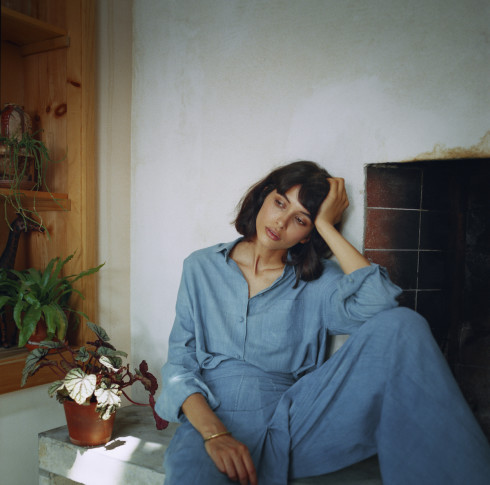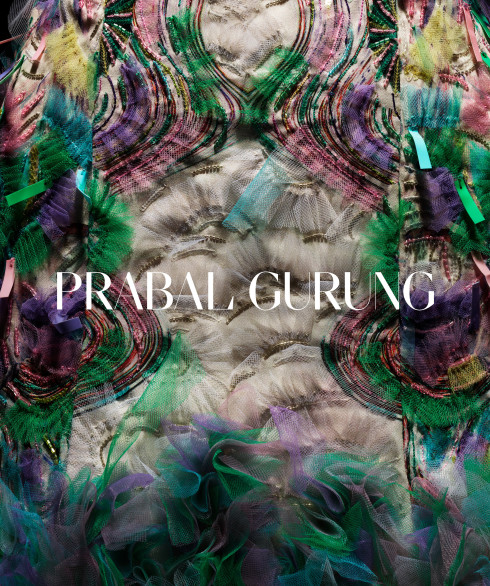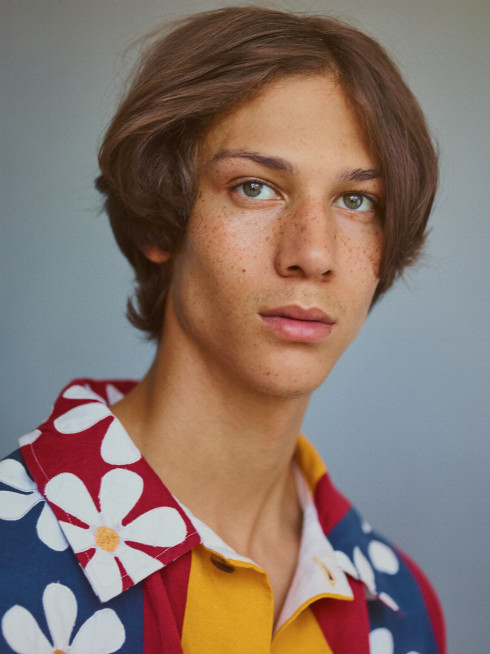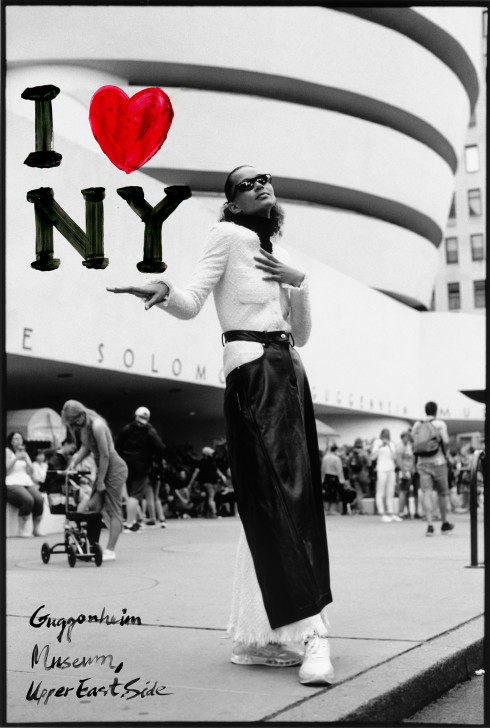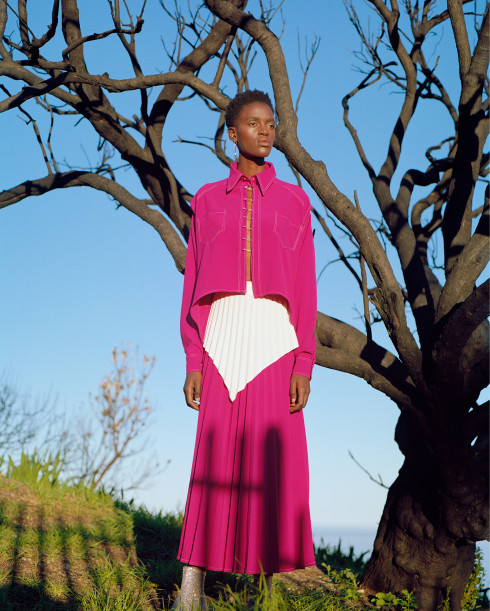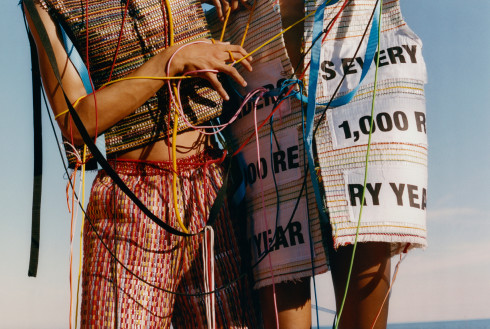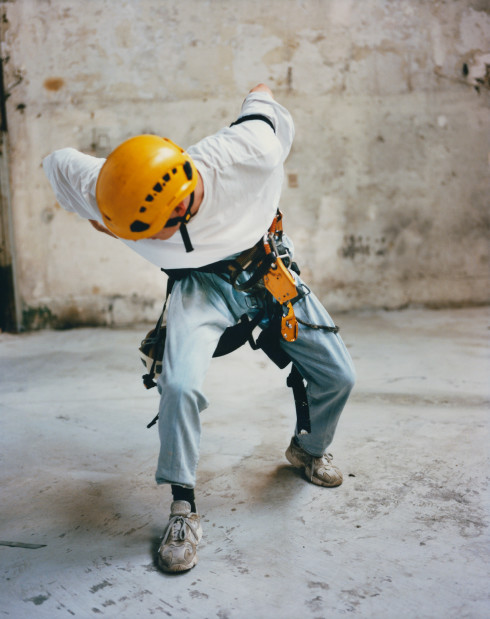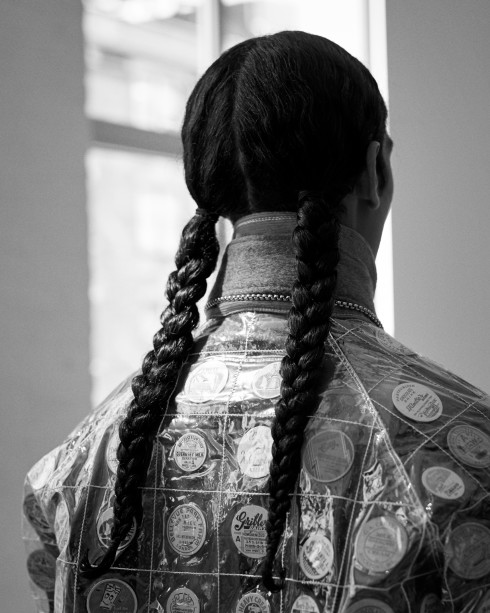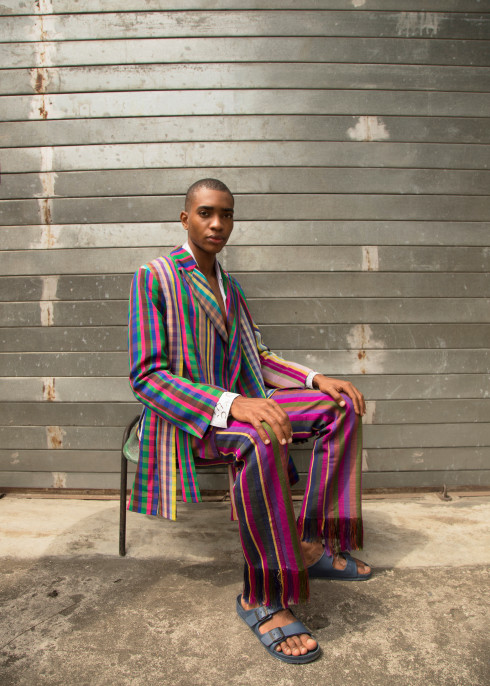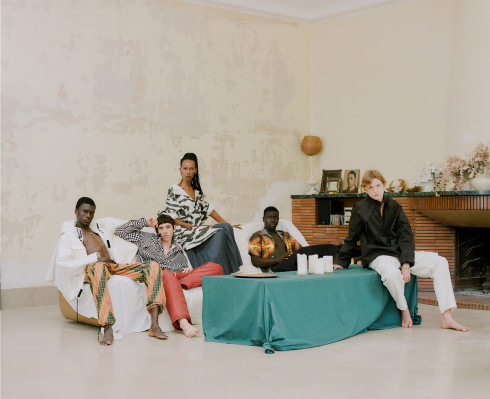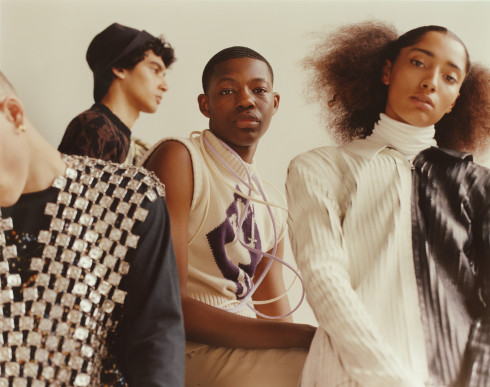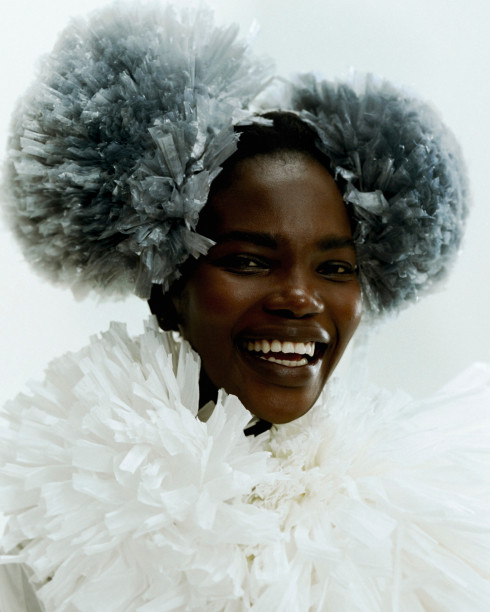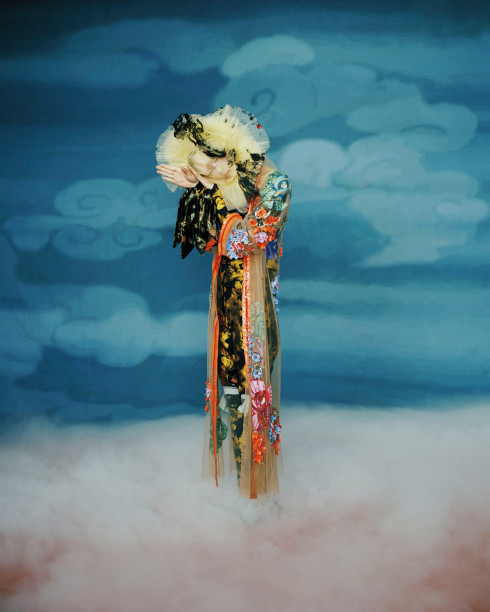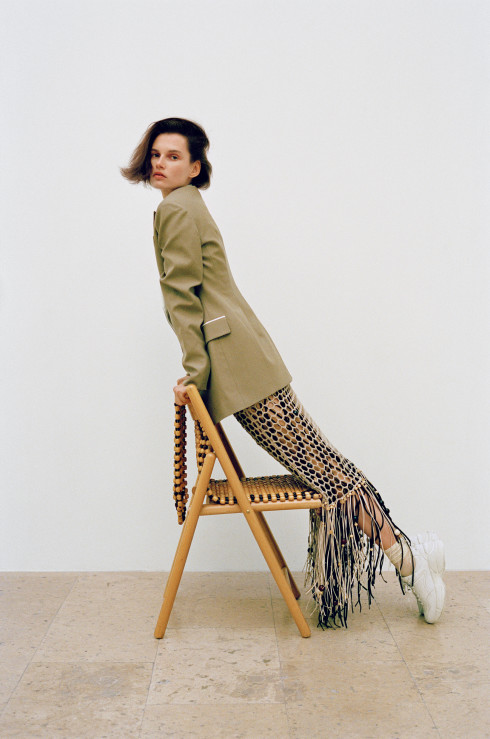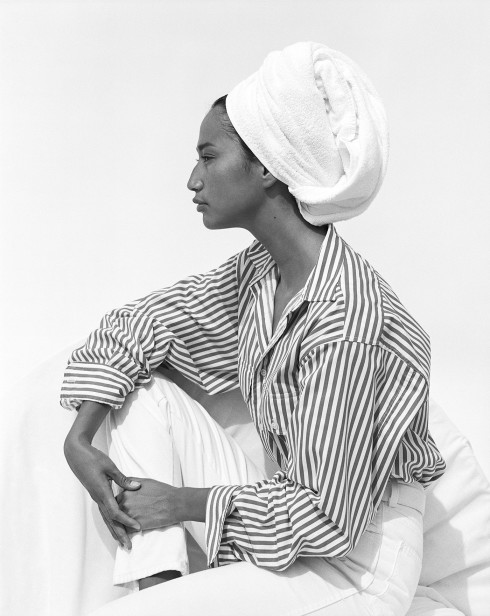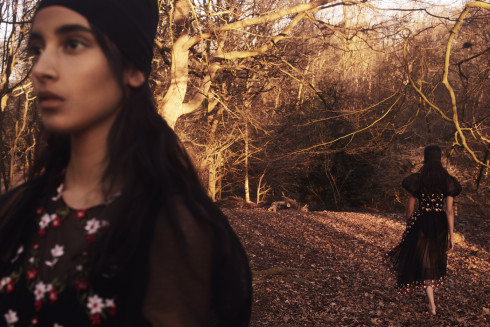
- Interview by
- Magnus Berger
- Photography by
- Maciek Kobielskei
BALMAIN'S OLIVIER ROUSTEING
When Olivier Rousteing was named creative director of the French house of Balmain in 2011 at the age of twenty-five, the press jumped at his youth. Now, nearly three years later, Rousteing’s invigorating, decadent vision has established itself as a strong counterpoint to the sleek minimalism that is favored by so many of his fellow young designers. In a conversation with The Last Magazine’s Magnus Berger the day after styling his Spring collection on Karlie Kloss, Rousteing talks about his Eighties inspirations, his fascination with Fabergè eggs, and his love of Rihanna.
Magnus Berger: What I found really interesting about the last show season in Paris, it’s almost this epidemic of referencing the Nineties, and a lot looks the same, even the editors. With a few exceptions, the ones who are supposed to be pushing for new things, they’re all wearing the same things. But then I saw the Balmain show and thought, Here’s someone who is so young, who has his own voice, and doesn’t seem to be afraid of doing what he feels like. I find that quite refreshing, and I was impressed by that strength and conviction, that you just seem to be going for it. It was great to see such a young designer going against that, what is supposed to be “good taste” or “correct.”
Olivier Rousteing: I think that’s very me. I don’t like what is “correct.” My culture is French, and people can say, “Balmain is the most Italian French house,” whatever they want, but at the end of the day, my culture is not Helmut Lang or Comme des Garçons or Watanabe. There’s not many young French designers, and my own voice is this nostalgia for old French houses. That’s why you can see big references to old French houses. But it’s what I am, and I’m not scared. I’m more scared of doing a show that is not me. It’s always more difficult to fight and to say the show was amazing when it’s not you and you just followed a trend or whatever. I love oversized big beige coats, but at the end of the day, everybody’s doing the same thing and trying to be the closest to Céline, so I’m just like, “Let’s do something else.”
Let’s rewind a bit. Where did you grow up?
I grew up in the South of France with my parents. I did high school, college, and a bit of fashion school, which I stopped after five or six months. I just wanted to go. I left the house when I was eighteen and went to Italy. I was an intern at Alta Moda Roma, the haute couture in Rome, for three months.
So that’s when you started working?
I decided to go to Italy. The beginning was in Rome, then Milan, and I ended up in Florence after five-and-a-half years. It was a really, really nice experience. Rome is really like La dolce vita. You don’t work so much and just enjoy the beauty of the city and you don’t really do a lot of things except have a coffee in the piazza and have fun. My parents saw that maybe I was having too much fun, so they took my money and I had to wake up at one point and just decide, Ok, let’s really, really work. But hey, I was really young too.
Well that’s one way to realize that you need to start working hard, when you need to pay your bills.
Exactly. I went to intern for Cavalli and Versace and then I worked at Cavalli for six years. I did so many jobs, because when I went to Cavalli, I was kind of proud, I didn’t want to say that I needed money. I just found my flat, which was awful. There were mice and cockroaches and I had rain in my house, so I really had to work hard. I had many jobs outside Cavalli, and I was working with [former Cavalli designer] Peter Dundas. I was working in nightclubs as a waiter or dancing a bit, always dressed obviously. [LAUGHS] But I did so many things because I needed money. But it’s cool, I had those fittings with [stylist] Anna dello Russo and Peter Dundas until maybe one in the morning and after, I went to the clubs. It was an intense year at the beginning at Cavalli, but it makes you stronger.
Also from the issue: Karlie Kloss in Balmain
Before you started at Balmain, were you aware of the tradition of the house? And when you came in contact with the archival work, was that something you already knew?
Yeah, I was watching Balmain when [former Balmain designer] Christophe [Decarnin] was there, when [stylist] Emmanuelle Alt was consulting there. They’ve always been couture. Maybe it’s not really famous in the rest of the world, but in France, it was a really traditional house. Obviously it was not Chanel, but there is this name that you feel really proud of having in Paris. So I knew what was happening there before Christophe, but I obviously loved what he was doing at Balmain, so that’s why I moved.
Have you always been drawn to the type of æsthetic that you’re exploring now?
Yeah, I was born in France, so I always loved Yves Saint Laurent, Paul Poiret. I always loved this really old French couture. I even loved Christian Lacroix, Chanel. I always loved the really French style, but there was something that I loved about Italy that we didn’t get in France. It was more the bling aspect, this kind of richness, because at one point France started to go away from the couture aspect and be more about tradition, so I wanted to mix. I was born with Yves Saint Laurent shows and I was watching them and I was crazy for him, but I wanted to go to Italy to get the richness.
Are the Eighties references something that you felt were there even when you were much younger, though you hardly experienced them yourself firsthand?
I always loved the Eighties. I think you always love what you don’t know, the generation before you.
The one that you just missed.
Yeah, it’s the generation of my parents. I was born in ’85, so I was a baby when Michael Jackson was singing. Obviously I didn’t really know about the Eighties, but I always have a dream about what the Eighties could be for me. I started with the Eighties, but now that, season after season, I’m becoming more myself, I am starting to use my generation more. My latest shows, for example, are less Eighties and more Nineties. They are more hip hop and pop, more what I grew up with. I think the Eighties were a really nice starting point for me, because they were all my dreams, and now I love the fact that I’m going for the Nineties more and using my own generation more than the generation of my parents.
Who is the woman that you have in mind when you design? Is it a fantasy, or is it actual people who inspire you?
I think it’s a fantasy. It’s a real mix. In my mind, I can always have Emmanuelle Alt, who has this really French, chic, and cool attitude. She always knows how to mix things and I used to work with her before, so I always try to keep her in my mind, but at the same time, I love Rihanna.
I saw a picture of her the other day in the leather jumpsuit, that kind of piece that when you see it on the runway, you’re not sure if it can translate to the street, but she definitely pulled it off.
Yeah, I’m really happy. I have a really good connection with her. I met her four months ago. She came to the studio, she tried some clothes on, and from that, we started a really nice relationship. She’s part of my generation. She’s kind of the same age and I play her songs when I’m working. But I can also have my mind on Coco Chanel sometimes and think how she was so chic and amazing. I love mixing all those girls. That’s why I’m really proud when I see Rihanna wearing the jumpsuit, or Emmanuelle wearing the Lurex black jumpsuit at the Met. They’re completely different, but they pick up their cool things from the shows. I like that, I like the fact that we are open to different women.
And they all wear it in different ways.
Yes, I love that. At this shoot we did yesterday, Karlie was like, “Do you like styling your clothes?” I was like, “Yeah,” but I don’t know how to style in a different way, because it’s me. But I like the feeling when you can mix like Balenciaga or Céline with Balmain. I love this feeling of mixing, that’s why I like the attitude of the girls. They can wear Balmain with something else. I like the fact that they mix brands.
What else is inspiring for you, besides singers? Are there other artists or movies that you’re looking at?
Yeah, I think for me travel is really important, and artists too. I’m crazy for Andy Warhol, Pop Art. I love colors and I love how he was pushing the boundaries and there were no taboos. I love what he did. I love Basquiat too. I like when artists mix with music or with clubs. When people ask me, “Why do you love Gianni Versace?” I just say I like him because he played with architecture. I love the way he used prints and huge references to architecture and interior design. I love Warhol or Basquiat because they mixed their art with clubbing and houses. It’s mixing everything together and making it more real. I don’t like the idea of, art is just art, or fashion is just fashion, or music is just music.
I think that’s the only way things can move forward. No one lives with only fashion or only art or only music. It’s the interaction that brings you forward and makes it interesting. Going back to your love of music, who are some of your favorites?
I love hip hop. I love 50 Cent, I love Rihanna. I love pop, I love Michael Jackson. I love Prince obviously, I love George Michael, I love David Bowie. I love those men who made fashion so impor- tant. They were using so much fashion onstage and in their videos, and they were mixing femininity with masculinity and they just didn’t care. They were pushing the limits. That’s what I love, and that’s why today I love Rihanna, because she’s doing the same. She’s just using the clothes and she owns it. When you see Rihanna wearing the black leather jumpsuit, you can see it’s her own reality.
Yeah, and she wears it in a way so you’re like, Oh, you can actually wear that. Whereas when you see it on the runway, it can be almost intimidating for some people.
That’s why I’m really pissed when people say, “Oh, Balmain is not real.” I mean, if real means just a beige or gray coat, of course it’s not “real,” but I don’t think today there is only that. My show and my clothes are real for different women, you just need to find them.
I read something about how the inspiration for your Fall 2012 collection was Fabergé eggs. It was fun to hear that it can start from something small like an object and you think, How can this translate into a full collection?
Exactly. I’m never inspired by just another collection’s show. Even if some people say, “Oh, it feels really Versace,” or, “It feels very Chanel,” it’s not about the brands. It’s more about the culture and the mentality that remind me of those times. The Fabergé inspiration was really funny because I went to Christie’s for an Elizabeth Taylor exhibition and I saw this really small Fabergé egg that I thought was really impressive because it was so well-worked. When you speak about Fabergé, it always reminds people of this richness from a long time ago, and I love the fact that Liz Taylor was my muse for this show, because you usually don’t say Liz Taylor. It was like, “Oh my god, you can’t say that you did a show on Liz Taylor,” and I said, “Yes, I want to, because I love that she was friends with Michael Jackson, I love the fact that she has this huge past and this huge story, and I love the fact that she had twenty husbands and everything is big and rich and she didn’t care and I think she was the most generous person ever.” I think for me that was important to have an inspiration that was more me and not just have a stylist come and tell me, “Let’s do Watanabe from ’92.” I wanted pearls and I wanted velvet and I was in love with all those caftans that she wore and that hair. She was so amazing for her time.
Is there ever a discussion about the price point with Balmain? It is known for being super expensive. I assume that you don’t want to compromise anything with the quality or the craft, but is there ever that conversation about opening up to a wider market?
Yeah, I’m trying to find a way to make those prices more affordable. I’m young and I can’t afford a ten-thousand-dollar jacket. My president is really happy because sales are really, really good, so we are working more and more on making prices more affordable. The thing is that when you have a small company, you don’t have such big volume, so when you do only ten jackets in the world, they have to cost a lot. When you start to become bigger and bigger, you can lower those prices, and luckily that’s what’s going on now.
So what’s the goal, to make Balmain available for everyone?
Yeah! I would love that. [LAUGHS]
And now it’s a style that really works for a much larger audience.
I think it can work. You can see H&M and Zara copying, and I love that. When you don’t get copied, it’s the worst thing that can happen to you. I always love seeing the windows of Zara or H&M with my diamonds, my black-and-white print, and just seeing, Oh wow, they’re pretty cool to do that, maybe I should think about that. It helps me when I see my girls in the office come in with their sweatshirts that are completely the same copy of the pearls from the Fabergé egg, just like, Fuck, why didn’t I think of that? I think it’s clever.
And the New York store that you’re planning, will it be similar to the one in Paris?
It will keep certain codes, but it’s important that we don’t repeat what we have in Paris. I think it’s really interesting to propose something new. Paris is Paris, so you can have this Haussmannian architecture and it makes sense, but I don’t think we would like to have Haussmann in the middle of New York. You do a New York version of it. The clothes will be French enough, so let’s think about something new for the architecture, the design. I think it will be really interesting. It’s interesting to see Balmain in different contexts. It’s like shooting for The Last Magazine in Brooklyn, this crazy, over-the-top silver dress in the middle of a super minimal and completely raw studio. I think it’s super cool.
Olivier Rousteing will show his Fall 2014 collection for Balmain tomorrow during Paris Fashion Week.
- Interview by
- Magnus Berger
- Photography by
- Maciek Kobielskei
